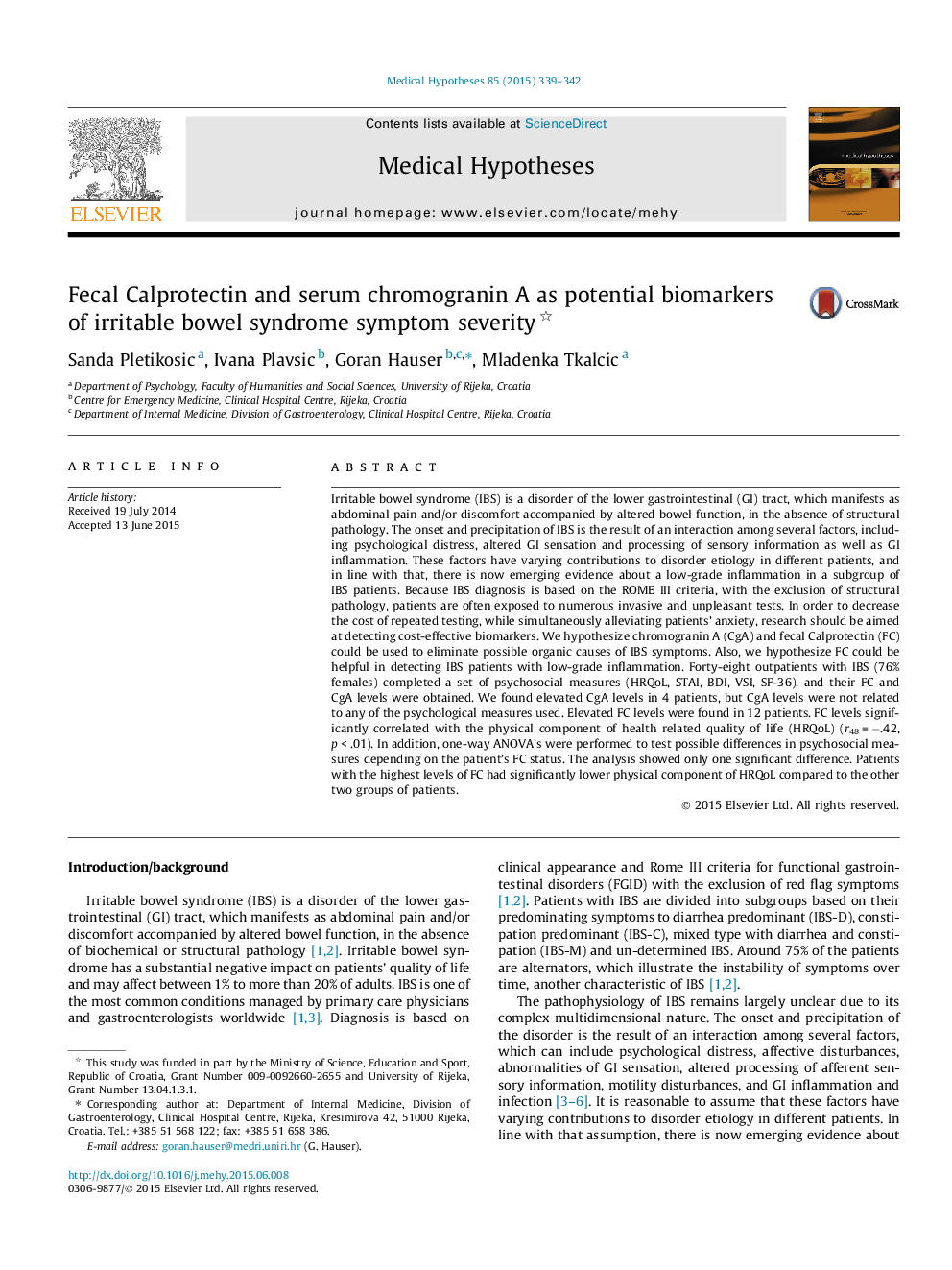| Article ID | Journal | Published Year | Pages | File Type |
|---|---|---|---|---|
| 5810969 | Medical Hypotheses | 2015 | 4 Pages |
Irritable bowel syndrome (IBS) is a disorder of the lower gastrointestinal (GI) tract, which manifests as abdominal pain and/or discomfort accompanied by altered bowel function, in the absence of structural pathology. The onset and precipitation of IBS is the result of an interaction among several factors, including psychological distress, altered GI sensation and processing of sensory information as well as GI inflammation. These factors have varying contributions to disorder etiology in different patients, and in line with that, there is now emerging evidence about a low-grade inflammation in a subgroup of IBS patients. Because IBS diagnosis is based on the ROME III criteria, with the exclusion of structural pathology, patients are often exposed to numerous invasive and unpleasant tests. In order to decrease the cost of repeated testing, while simultaneously alleviating patients' anxiety, research should be aimed at detecting cost-effective biomarkers. We hypothesize chromogranin A (CgA) and fecal Calprotectin (FC) could be used to eliminate possible organic causes of IBS symptoms. Also, we hypothesize FC could be helpful in detecting IBS patients with low-grade inflammation. Forty-eight outpatients with IBS (76% females) completed a set of psychosocial measures (HRQoL, STAI, BDI, VSI, SF-36), and their FC and CgA levels were obtained. We found elevated CgA levels in 4 patients, but CgA levels were not related to any of the psychological measures used. Elevated FC levels were found in 12 patients. FC levels significantly correlated with the physical component of health related quality of life (HRQoL) (r48 = â.42, p < .01). In addition, one-way ANOVA's were performed to test possible differences in psychosocial measures depending on the patient's FC status. The analysis showed only one significant difference. Patients with the highest levels of FC had significantly lower physical component of HRQoL compared to the other two groups of patients.
